Exploring the Role of CHO Cells in Biotechnology
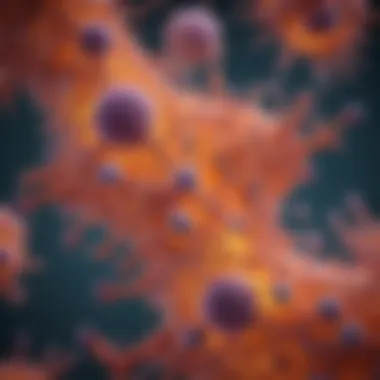
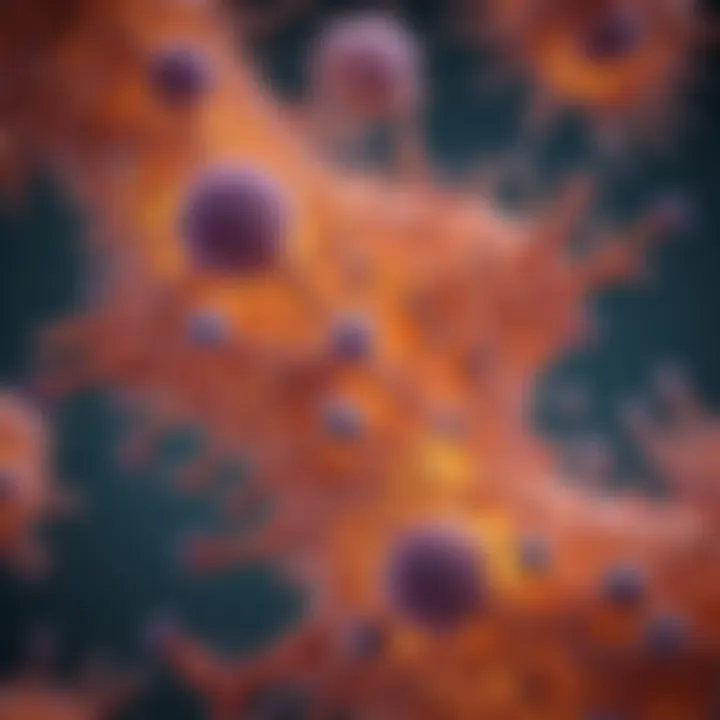
Intro
In the expansive realm of biotechnology, one topic that stands out is the utilization of Cho cells. These cells, isolated from the ovary of the Chinese hamster, have captured the attention of researchers and scientists alike. Their unique properties make them a favored choice in various applications, particularly in the production of therapeutic proteins and monoclonal antibodies. The landscape of cell biology is layered and intricate, yet understanding Cho cells opens a door to numerous possibilities and advancements.
Research Background
Overview of the scientific problem addressed
The challenge in producing proteins for therapeutic use is a long-standing issue in biotechnology. Proteins, especially those like antibodies, can be difficult to cultivate in sufficient quantities and with the right structures in other cell systems. The quest for a reliable, stable, and scalable production system has led scientists to explore different types of cells, with Cho cells emerging as a frontrunner.
Historical context and previous studies
Cho cells have a rich history dating back to the 1980s when they were first developed for applications in genetic engineering and protein expression. Early research demonstrated their ability to grow in suspension culture, a higher yield being one of their many advantages. Studies such as those conducted by Wurm and others showcased the potential of these cells in commercial applications.
These cells revolutionized the field with their use in drug production, particularly in the biopharmaceutical industry. Their use in producing critical drugs, like recombinant erythropoietin, has propelled further innovations.
Findings and Discussion
Key results of the research
Numerous studies have emphasized the efficiency and reliability of Cho cells. One remarkable observation is their ability to produce glycoproteins that are correctly folded and fully glycosylated. This characteristic is paramount because improper folding can lead to a complete loss of biological activity.
In addition, Cho cells are known for:
- Scalability: They can be cultivated in large bioreactors, which is vital for industrial applications.
- Robustness: Survival and productivity across different conditions make them highly adaptable.
- Post-translational modifications: These cells facilitate crucial modifications that enhance therapeutic efficacy.
Interpretation of the findings
The advantages of using Cho cells are undeniable. Their unique characteristics support the notion that they could very well dominate the future of protein production in biotechnology. As research advances, modifications and enhancements to Cho cell lines keep surfacing, leading to increased productivity and purity of produced proteins.
"Cho cells' role in drug development cannot be overstated; they provide essential tools for advancing modern medicine."
As potential applications of Cho cells expand—from gene therapy to vaccine development—it's clear that the implications of their utility stretch far beyond initial expectations. The scientific community stands at a pivotal point in Cho cell research, with various avenues waiting to be explored.
Prolusion to Cho Cells
The world of biotechnology rests on a variety of cellular systems, but none have captured the attention of researchers quite like CHO cells. As we embark on understanding these critical cells, it becomes vital to appreciate their importance. CHO, or Chinese Hamster Ovary cells, have revolutionized biopharmaceutical production and molecular research. Their use spans from creating therapeutic proteins to contributing insights into fundamental biological processes.
When we dive into the realm of CHO cells, it’s essential to grasp their definition and origin to fully appreciate their evolution and wide-ranging applicability in laboratories around the globe. What sets these cells apart? The short answer lies in their high productivity, adaptability, and ability to produce complex proteins that are crucial for medical advancements.
As we unfold the narrative, we will also explore their historical development, highlighting major breakthroughs and the ongoing innovations that make these cells a staple in many biotechnological applications. This foundation will lay the groundwork for understanding how they can address pressing medical challenges in our rapidly changing world.
"CHO cells have become the gold standard in the production of therapies for various conditions, proving their unassailable worth in the biotech arena."
By dissecting their characteristics and applications, we aim to furnish students, researchers, and professionals alike with a comprehensive grasp of why and how CHO cells are instrumental in scientific research today.
Definition and Origin
CHO cells are cultured cells derived from the ovarian tissue of the Chinese hamster. This origin is not just historical trivia; it imbues the cells with significant properties that make them suitable for mammalian cell systems. They are characterized as eukaryotic cells, possessing complex cellular machinery, which is essential in the production of glycosylated proteins. Because they can replicate indefinitely when provided with the right conditions, researchers find them extremely useful for long-term studies and large-scale productions.
Their discovery in the 1950s marked a turning point in cellular biology. The need for a robust cell line that could be easily maintained and manipulated in a laboratory setting led to the isolation of these cells. Over the years, their use has expanded across various fields, providing a model system capable of producing human-like proteins crucial for therapeutic purposes.
History of Cho Cell Development
A brief stroll down history lane will reveal that the first CHO cells were isolated by Kao and colleagues at the Cleveland Clinic in 1957. At that time, the scientific community was on the lookout for suitable cell lines for cancer research, and these cells seemed like a promising candidate. Their resilience and ability to grow in vitro made them an invaluable asset.
As the years rolled by, several milestones in CHO cell development emerged. From the establishment of the CHO-K1 cell line in the 1960s to its transfections and modifications in subsequent decades, the versatility of CHO cells has expanded.
Innovative advances in molecular biology during the 1990s allowed researchers to enhance the metabolic pathways of these cells. This led to not only improved protein yields but also more sophisticated biological functions such as better glycosylation processes, critical for the efficacy of many drugs.
Today, CHO cells are the backbone of biopharmaceutical production, playing a central role in the synthesis of monoclonal antibodies and recombinant proteins. Their journey from a simple ovarian tissue sample to a powerhouse of biotechnology reflects the persistent evolution and increasing complexity of biological research.
As we transition deeper into the characteristics and applications of CHO cells, understanding their definition and historical context will serve as a crucial base for exploring what the future holds for these cellular workhorses.
Biological Characteristics of Cho Cells
The biological characteristics of CHO cells are fundamental to their functionality and application in biotechnological processes. Understanding these traits is key for both researchers and industry professionals who rely on these cells for the production of therapeutic proteins and other bioproducts. The morphological features and growth patterns of CHO cells, alongside their genetic attributes, contribute directly to their efficacy in various applications.
Morphology and Growth
CHO cells are notable for their adherent growth patterns, typically found attched to surfaces in culture systems. Under a microscope, these cells reveal a larger, rounded shape, which is indicative of their adaptability to different culture conditions. This adaptability allows them to thrive in serum-free media, making them a preferred choice for large-scale protein production.
- Growth phases: CHO cells demonstrate typical mammalian cell growth phases�—lag, log, and stationary. In the lag phase, cells acclimatize to new environments before entering exponential growth during the log phase. The stationary phase often results when nutrients deplete or waste products build up.
- Doubling time: The doubling time for CHO cells typically ranges from 12 to 24 hours, depending on several factors such as the specific cell line and culture conditions.
These characteristics allow scientists to optimize growth conditions effectively. Manipulating factors like temperature, pH, and nutrient availability significantly influences overall yield and health of cultures.
"The flexibility and growth rate of CHO cells provide a strong platform for the discovery and production of biologics, aligning perfectly with the rapid pace of biopharmaceutical research."
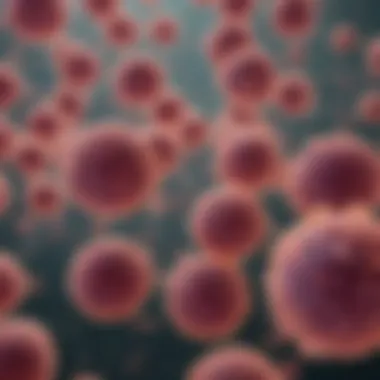
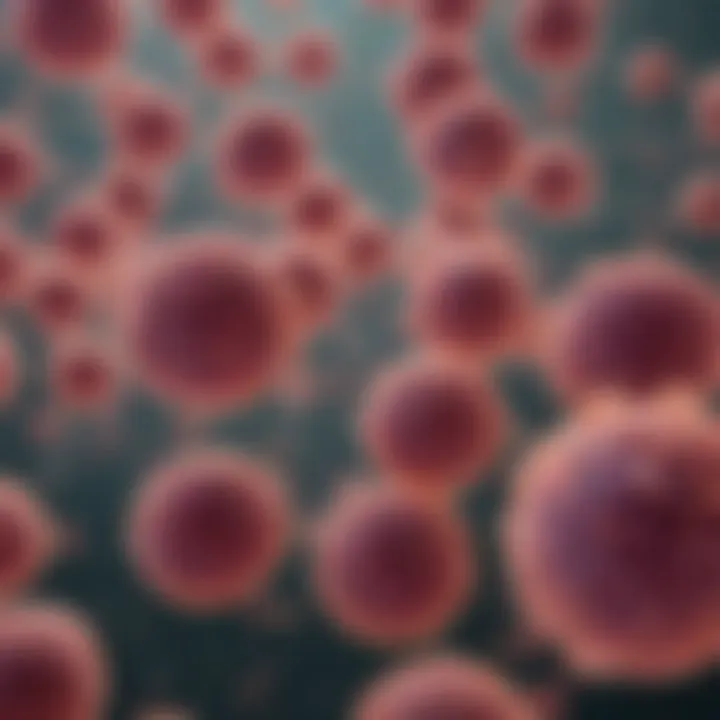
Genetic Properties
The genetic properties of CHO cells enhance their attractiveness as a host for gene expression. These cells are euploid, meaning they maintain a complete set of chromosomes. This genetic makeup confers several advantages:
- Stable expression: CHO cells can maintain stability in protein expression over extended culture periods, essential for long-term projects.
- Gene editing potential: Recent advancements in gene editing technologies allow researchers to alter the genetic structure of CHO cells, enhancing their capabilities. For instance, techniques like CRISPR-Cas9 have paved the way for creating modified cell lines that can produce specialized proteins.
Due to these genetic characteristics, CHO cells are beneficial for producing complex glycoproteins, which are crucial in drug development. Understanding how to harness these attributes can lead to improved therapies and drug designs, further propelling innovation in biomedicine and biotechnology.
In summary, exploring the biological characteristics of CHO cells provides invaluable insights into their suitability for a variety of applications in biotechnology. Their unique morphology, growth capabilities, and stable genetic makeup not only make them a powerhouse for research and development but also serve as a launching pad for future advancements in the field.
CHO Cell Lines: An Overview
CHO cells, or Chinese Hamster Ovary cells, are widely recognized in biotechnology for their invaluable role in producing proteins and other biological products. They offer unique advantages that make them a go-to choice for researchers and industries alike. Understanding these cell lines is key, as they serve as the foundation for many biopharmaceutical developments.
Importance of CHO Cell Lines in Biotechnology
These cell lines are more than just lab culturing material; they have become essential tools in creating therapeutics. Their robustness, adaptability, and capacity for post-translational modifications allow for complex protein production, making them indispensable for the biologics industry. When it comes to monoclonal antibodies, for instance, CHO cells often outperform other systems, providing the needed glycosylation patterns that enhance serum half-lives and overall therapeutic efficacy.
Additionally, the ease of cultivation and scalability of CHO cells means that they can be produced in large quantities without compromising quality. This scalability not only supports large-scale manufacturing processes but also reduces costs, which is crucial for the economic viability of drug production. Beyond practicality, their use in regulatory-approved products further solidifies the importance of CHO cell lines in global health.
CHO Cell Lines in Research and Development
In the realm of research, CHO cells are employed for diverse applications ranging from basic biological studies to complex therapeutic developments. Researchers often manipulate these cells to enhance their functionality, enabling groundbreaking advancements. The exploration of genetic modifications allows scientists to create tailored cell lines suitable for specific needs.
As biotechnological exploration continues, understanding the nuances of CHO cell lines provides insight into their suitability for various applications, setting the groundwork for innovative therapies in the future.
Commonly Used Cho Cell Lines
Several specific CHO cell lines have carved their niche due to their distinct traits and functionalities. These lines cater to various research and production needs, each offering unique advantages depending on the context of their use.
- CHO-S: This line is widely favored for its fast growth and ease of transfection. It is primarily used for producing recombinant proteins and is notable for generating high yields.
- CHO-K1: Known for its versatility, CHO-K1 serves as a standard in many laboratories. Its ability to grow in suspension culture makes it ideal for large-scale production processes.
- CHO-DG44: Modified for enhanced glutamine synthetase expression, CHO-DG44 enables researchers to select genetically modified cells more easily.
- CHO-GS: This variant utilizes a glutamine-synthetase-deficient approach, allowing for increased productivity while simplifying the selection process during culturing.
Overall, these commonly used CHO cell lines illustrate the adaptability and efficiency of CHO cells in different biotechnological settings.
Modifications and Variants
The beauty of CHO cell lines lies in their capacity for modifications and variants, enabling them to be tailored for specific applications. Researchers can fine-tune these cells through various methods, enhancing their usefulness in producing high-quality biopharmaceuticals.
- Gene Editing: The advent of genome editing tools like CRISPR-Cas9 and TALENs allows precise modifications in CHO cells. Such advancements enable scientists to knock in or knock out specific genes, optimizing proteins’ characteristics for therapeutic uses.
- Cultural Conditions: Altering environmental factors such as temperature, pH, and nutrient levels can significantly impact cell growth and productivity. Customizing these conditions can lead to higher yields in protein production.
- Cationic Lipid Transfection: This technique enhances the efficiency of gene delivery into CHO cells. Utilizing cationic lipids can lead to more effective and reproducible transfection processes, crucial for high-stakes applications.
By employing these modifications and variants, researchers can exploit the versatility of CHO cells, leading to innovations that push the boundaries of current biotechnology.
In summary, a deep understanding of CHO cell lines not only enriches academic and practical applications but also has far-reaching implications in the development of the next generation of therapeutics.
Applications of Cho Cells in Biotechnology
The versatility of Chinese Hamster Ovary (CHO) cells has made them a cornerstone in the arena of biotechnology. These cells are not just a tool but a fundamental component in the development of medical therapies that have changed lives. Their significance in various applications provides a glimpse into the interplay between cell biology and therapeutic innovation.
Production of Therapeutic Proteins
Therapeutic proteins are the bread and butter of modern medicine, used to treat everything from rare diseases to common ailments. CHO cells have become a favored choice for producing these proteins because they have the capabilities needed to carry out the complex processes of protein folding and modification.
One major advantage of using CHO cells lies in their ability to perform post-translational modifications, such as glycosylation, similar to human cells. This is crucial, as the efficacy and safety of therapeutic proteins often hinge on these modifications being done correctly. Notably, the production of Recombinant Factor VIII, a protein vital for treating hemophilia A, exemplifies CHO cells in action. In addition, processes can be scaled up easily, allowing researchers and companies to meet the rising demand for various therapies.
"The shift to CHO cells in pharmaceutical production has not only improved yield but also consistency in protein quality, which is paramount for regulatory approvals."
Vaccines Development
The role of CHO cells in vaccine development cannot be overstated. Throughout the history of vaccine innovation, they've provided a safe and efficient platform for generating virus-like particles or recombinant proteins used in various vaccines. Their ability to produce complex proteins ensures that vaccines can elicit strong immune responses.
A striking example is the use of CHO cells for the production of the Recombinant Hepatitis B Vaccine. This vaccine has not only been widely successful in eradicating hepatitis B virus transmissions globally but also highlights how CHO cells fit into large-scale public health initiatives. The scalability of CHO cell culture systems makes it easier to respond to vaccine demands, particularly during public health emergencies.
Gene Therapy Applications
Gene therapy is a burgeoning field that seeks to treat diseases at their genetic root. Here, CHO cells have found themselves at the center of research, helping to facilitate the delivery of therapeutic genes into target cells. Their capacity for stable, high-level expression of proteins is an invaluable trait in the development of gene therapies.
For instance, the use of CHO cells in the creation of Adeno-Associated Viral (AAV) vectors has revolutionized the way we approach diseases like muscular dystrophy and hemophilia. By providing a reliable platform for AAV production, CHO cells complement research aimed at permanent solutions rather than temporary fixes. This reflects the cells' crucial role in driving forward not just treatments but also the science underpinning these innovations.
In summary, the applications of CHO cells in biotechnology cover a broad spectrum, from producing therapeutic proteins to revolutionary vaccine development and advanced gene therapy strategies. As research progresses, the expectation is that CHO cells will continue to lead the way in developing the next generation of biopharmaceuticals.
By understanding the many ways CHO cells contribute to these fields, we are poised to grasp their potential fully and how they can expand scientific frontiers.
Advantages of Using Cho Cells
When it comes to biotechnological applications, Chinese Hamster Ovary (CHO) cells have earned their stripes as a frontrunner. Their prominence in research and industrial production can often be traced back to several advantageous traits that make them highly sought after. Understanding these advantages not only illuminates why CHO cells are a staple in laboratory settings but also helps researchers to make informed choices about their methodologies.
High Yield Production
One of the primary reasons CHO cells have gained popularity is their ability to produce substantial quantities of proteins. This higher yield is crucial in pharma and agriculture, where efficient protein production can mean the difference between a successful trial and a flop. The adaptable nature of CHO cells allows researchers to fine-tune their growth conditions, leading to maximized output.
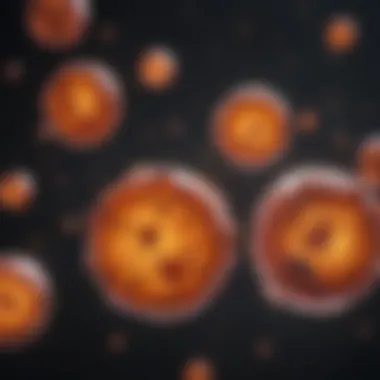
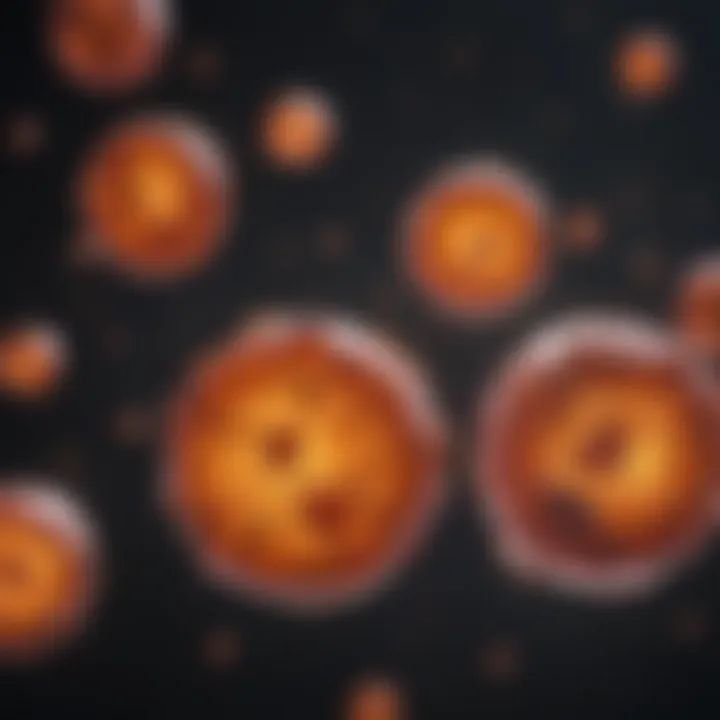
For instance, when CHO cells are cultured in a bioreactor under optimal conditions—with carefully controlled pH levels and nutrient-rich media—the quantity of expressed proteins can be significantly higher than other cell systems. The scalability of this method ensures that from pilot studies right up to large-scale production, the process remains both efficient and cost-effective.
Post-translational Modifications
Another significant aspect of CHO cells is their capacity for post-translational modifications, which are essential for the functionality of therapeutic proteins. These modifications, such as glycosylation, play a critical role in determining how effectively a therapeutic protein can interact with human cells.
In contrast to systems like E. coli, which lack the machinery for such modifications, CHO cells provide a robust platform for achieving the right modifications needed for bioactivity. This characteristic is particularly important for biologics undergoing clinical trials. Effective medication relies heavily on proper folding and post-translational adjustments, making CHO cells a reasonable choice for developing biopharmaceuticals.
The ability of CHO cells to perform complex post-translational modifications bridges the gap between simple protein expression systems and the need for biologically active molecules in advanced therapies.
Scalability in Culture Systems
Scalability is another trump card in CHO cells’ lineup. Researchers can transition from small lab-scale experiments to industrial-scale production relatively seamlessly. This scalability is facilitated by CHO cells' robustness and the well-established protocols for their culture and expansion. Whether in small flasks or huge bioreactors, CHO cells adapt effectively, maintaining their productive capacity across various conditions.
Culturally, these cells can be scaled up to accommodate larger volumes, catering to the increasing demands of clinical production and development. This adaptability is particularly attractive for biotechnology firms that might be moving towards final production without having to worry about significant adjustments to cultivation techniques.
In summary, the advantages of using CHO cells in biotechnological applications encompass high yield production, reliable post-translational modifications, and unmatched scalability in culture systems. Collectively, these strengths form the backbone of why CHO cells remain dominantly useful in the research and production arenas. By helping researchers maximize performance while minimizing risks, CHO cells have rightfully earned their position in modern biotechnology.
Limitations and Challenges of Cho Cells
Understanding the limitations and challenges that accompany the use of CHO cells is crucial for researchers and developers in the field of biotechnology. While CHO cells have proven to be invaluable tools for the production of therapeutic proteins and other biopharmaceuticals, it is equally important to recognize the hurdles that can impede progress. Knowledge of these limitations not only guides researchers in the effective utilization of CHO cells but also aids in better design and execution of experiments. Below, we will delve into specific metabolic restrictions and post-translational modification limitations that present challenges during research and application.
Metabolic Restrictions
CHO cells are not without their metabolic constraints, which can significantly affect the productivity of desired proteins. One common issue is their tendency to deplete certain key nutrients from the culture medium. These cells have specific nutritional requirements, and if these aren't carefully monitored, growth and production could take a hit. For instance, the lack of specific amino acids or vitamins can stunt cell growth rate or lead to an incomplete glycosylation pattern on the expressed proteins, which might limit efficacy or safety in therapeutic applications.
Another aspect to consider is the metabolic pathways inherent to CHO cells. Although generally efficient, their metabolism may not always align with the minimal requirements for maximal protein expression. For example, high levels of ammonia can build up as a byproduct of protein production, leading to cellular toxicity. Researchers often have to employ various strategies to mitigate these issues, including medium optimization or implementing feedback inhibition pathways.
Post-translational Modification Limitations
Post-translational modifications (PTMs) play a crucial role in the bioactivity of proteins. CHO cells are generally good with glycosylation, yet they lack some of the more complex PTMs that are essential for certain proteins. This limitation can hinder the functionality of therapeutic proteins that require specific modifications for activity or stability. For example, while CHO cells can perform basic glycosylation, they might not be able to execute more intricate modifications that occur in human cells, potentially altering the therapeutic efficacy of the produced proteins.
Moreover, as different CHO cell lines come with their unique characteristics, some might exhibit a more pronounced deficiency in certain PTMs than others. This makes it essential for researchers to choose the right cell line based on the specific needs of the protein being produced. Balancing the advantages with these limitations may require additional research and a tailored approach in the development phases.
Recent Advances in Cho Cell Technology
Recent advances in Cho cell technology have ushered in a new era of biotechnological innovations, providing researchers and manufacturers tools to enhance the efficiency and capabilities of these widely utilized cells. Innovations in this arena are crucial, primarily due to their significant implications in therapeutic production, vaccine development, and general research. The focus on refining these cell lines not only improves yield but also addresses challenges related to genetic modifications and protein expression.
Genome Editing Techniques
One of the standout developments in Cho cell technology is the advent of genome editing techniques. The emergence of methods like CRISPR-Cas9 has transformed how scientists approach cellular engineering. This approach allows for precise modifications at targeted sites within the genome, facilitating the creation of cell lines that meet specific research objectives or production requirements.
Benefits of Genome Editing in Cho Cells:
- Precision: The ability to edit specific genes minimizes unintended consequences in metabolic pathways.
- Customization: Researchers can tailor cell lines to produce desired proteins with enhanced characteristics.
- Efficiency: With optimized cellular frameworks, the production of recombinant proteins can be more streamlined, reducing time and cost associated with trial and error.
For example, targeted adjustments have improved the secretion rates of therapeutic proteins, making processes faster and more cost-effective. Such advancements signal a shift towards more personalized applications in medicine, as scientists can ensure that cell lines are as effective and efficient as possible.
Improved Expression Systems
Improving expression systems in Cho cells is another critical aspect of recent advancements. Enhanced systems allow for greater yields and better quality of proteins produced. Utilizing advanced promoter technologies, carefully designed plasmids, and optimized culture conditions can significantly affect how cells perform in laboratory settings.
- Enhanced Promoters: Stronger promoters ensure that genes of interest are readily expressed, leading to higher yields.
- Optimization of Culture Conditions: Tailored conditions, including pH, temperature, and nutrient media, can improve cell health and productivity.
- Co-expression of Helper Proteins: Introducing helper proteins can facilitate proper folding and post-translational modifications, resulting in functional proteins.
These improvements can not be overstated; they elevate the overall utility of Cho cells in both academic research and industry applications. For instance, the production of monoclonal antibodies has seen a surge in efficiency thanks to optimized expression systems, giving rise to more effective therapeutic options in healthcare.
Recent advances in Cho cell technology highlight the dynamic interplay between innovation and application, paving the way for more innovative biopharmaceuticals and research tools.
Comparison with Other Expression Systems
When looking at CHO cells, one can't help but weigh their capabilities against other commonly used expression systems. This comparison illuminates crucial advantages and considerations that make CHO cells a standout choice in the realm of biotechnology. In this section, we’ll explore the nuances of bacterial, yeast, and other mammalian systems to gauge how CHO cells stack up in diverse applications.
Bacterial Systems
Bacterial expression systems have long been a go-to for producing proteins due to their rapid growth rates and high yield potential. Often, the use of Escherichia coli proves to be both efficient and cost-effective. However, the crux of the matter lies in the differences in protein folding and modification. Bacteria generally lack the machinery to perform essential post-translational modifications, which renders many eukaryotic proteins ineffective when expressed in these systems.
- While bacterial systems do offer speed, their inherent limitations can be a dealbreaker depending on the protein properties.
- Factors like glycosylation, which is crucial for protein stability and functionality in therapeutic applications, are typically absent in bacterial systems.
In essence, while bacterial systems can churn out proteins quickly, they often fall short in delivering the complex functionality that many proteins require.
Yeast Systems
When one turns to yeast systems, like Pichia pastoris or Saccharomyces cerevisiae, they offer a middle ground. These systems have eukaryotic characteristics, allowing for some post-translational modifications and better folding compared to bacterial counterparts. They represent a compromise: while they can handle some of the modifications required, they still often lag behind mammalian systems, particularly in terms of complex glycosylation patterns.
Here are some noteworthy attributes of yeast systems:
- Significantly faster growth than mammalian cell lines, which might help in reducing production times.
- Generally lower cost compared to mammalian systems, which attracts many startups and researchers.
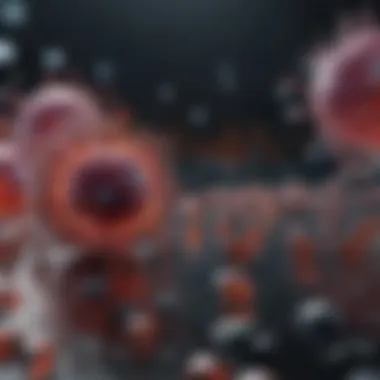

However, the yield quality may not consistently match that of CHO cells, especially for high-value therapeutic proteins.
Mammalian Systems
Mammalian expression systems are often hailed as the standard for complex protein production. They possess the necessary cellular machinery for comprehensive post-translational modifications, similar to what human cells would perform. Systems like HEK293 or NS0 have found their places within this domain. However, the costs associated with these systems can be astronomical, not to mention the extended timelines for growth and harvest.
What makes mammalian systems alluring includes:
- Compatibility with human proteins, ensuring that the therapeutic options are efficacious and well-tolerated.
- Superior post-translational modification capabilities that are essential for many biologics.
Nevertheless, the higher expenses and longer growth times often lead researchers to seek out alternatives like CHO cells. The latter manage to capture many of the benefits of mammalian systems while being considerably more economical and scalable.
Ultimately, in the quest for effective expression systems, CHO cells represent a sweet spot. They offer a balance, encapsulating many benefits of both bacterial and mammalian systems while sidestepping their common pitfalls. By standing at this intersection, CHO cells not only accelerate research and development but also provide high-quality products conducive to modern therapeutic needs.
Regulatory Aspects of Using Cho Cells
The utilization of CHO cells in biotechnology and pharmacology is not merely a scientific endeavor; it’s an enterprise laden with regulations and guidelines that ensure safety, efficacy, and ethical compliance. When it comes to working with CHO cells, researchers and companies need to be aware of a plethora of regulatory considerations. These factors are not just hurdles but rather essential checkpoints that safeguard public health and scientific integrity.
Safety Guidelines and Protocols
The safety of both researchers and the general public necessitates the establishment of comprehensive safety guidelines when using CHO cells. These protocols serve multiple purposes:
- Containment: To prevent any unintentional release of genetically modified organisms (GMOs) into the environment.
- Hazard Management: To mitigate risks associated with handling potentially hazardous materials, such as viral vectors used in gene therapy applications.
- Documentation: Ensuring that all procedures are well documented, which is crucial for compliance audits and inspections by regulatory authorities.
Key safety guidelines often revolve around the following principles:
- Use of Personal Protective Equipment (PPE): Researchers must wear appropriate PPE to minimize exposure.
- Biological Safety Cabinets: Work should be conducted inside cabinets that filter out contaminants.
- Waste Management: Proper disposal methods for biohazardous waste need to be established and strictly followed.
Regular training sessions for lab personnel on these protocols are essential. Such training ensures that all involved are familiar with best practices, thus minimizing risks.
"The meticulous compliance with safety protocols is not just good practice; it is a responsibility to public safety and scientific progress."
Ethical Considerations
While adherence to safety guidelines is integral for laboratory operations, ethical considerations add another layer of complexity to the use of CHO cells. For one, there exists a pressing need to balance scientific advancement with ethical responsibility. Researchers must grapple with several ethical questions:
- Source of Cell Lines: Where do the CHO cell lines come from? Transparency about the origin of these cells is paramount.
- Genetic Modification: Are the alterations made to the cells justified? They should aim to resolve significant health issues without causing undue harm.
- Impact on Human Health: What are the potential implications for human health, both positive and negative? Research should ultimately seek to benefit humanity without inciting adverse outcomes.
A few ethical guidelines can further illuminate this conversation:
- Informed Consent: This principle may extend indirectly to cell lines; understanding the provenance of biological samples is crucial.
- Animal Welfare: Although CHO cells are not derived from animals, research often uses them alongside animal studies. Ensuring humane treatment of all organisms involved in research is vital.
- Long-term Impact: Researchers should consider the long-term effects of their work on society and the environment. The aim should be to foster advancements that enhance quality of life.
Future Perspectives on Cho Cell Research
As we explore the horizon of CHO cell research, it becomes evident that these cells represent an essential cornerstone in the field of biotechnology. Their adaptability and efficiency are not just a flash in the pan; they hold the promise of far-reaching advancements that could redefine therapeutic processes. Future research avenues for CHO cells are paramount for numerous reasons, including their role in improving drug development, refining vaccine production methods, and offering insights into complex biological mechanisms.
Innovations in Cell Engineering
The future landscape of CHO cell technology is likely to be paved with innovations in cell engineering. Scientists are already harnessing breakthroughs like CRISPR-based genome editing to create cell lines that are more efficient and have superior characteristics. Consider this: by fine-tuning specific gene expressions, researchers can increase the productivity of CHO cells significantly. For instance, reengineering a CHO cell line to enhance glycosylation pathways results in a higher quality protein output, essential for therapeutic applications.
- Benefits of Innovations:
- Enhanced cell productivity and functionality
- Reduction in production costs
- Ability to create tailored cell lines specific to particular product requirements
These engineered cells are anticipated to tackle some of the current limitations, pushing us closer to more effective and affordable treatments.
Potential for Targeted Therapeutics
The potential for targeted therapeutics using CHO cells cannot be overlooked. As we dive deeper into the realms of personalized medicine, CHO cells offer a versatile platform for creating drugs that can target specific diseases at a molecular level. Imagine a scenario where therapies are custom-created based on individual patient factors; this reality is not far off.
- Key Considerations:
- Precision: CHO cells can be modified to express specific proteins that bind to disease markers, aiding in precise drug delivery.
- Safety: Research indicates that utilizing CHO cells may minimize potential adverse reactions as they can be tailored to reduce immune responses.
In today’s fast-paced research environment, the ability to produce therapeutic proteins that are highly specific to various pathologies—like different forms of cancer or rare genetic disorders—stands as a beacon of hope.
"As technology advances, the full potential of CHO cells in targeted therapeutics is just beginning to be tapped. The future leans heavily on these innovations for cost-effective solutions to complex biological problems."
Ending
In wrapping up our exploration of Cho cells, it is clear that these cellular powerhouses play a pivotal role in modern biotechnology. They have become the go-to choice for producing therapeutic proteins, vaccines, and various other biotechnological products. Given the increasing reliance on biological systems for drug development, understanding Cho cells deepens our appreciation of their contributions.
Summary of Key Findings
The review highlights several significant insights:
- Versatility in Applications: Cho cells have been utilized extensively in producing monoclonal antibodies and other biopharmaceuticals, thanks to their ability to perform post-translational modifications, akin to those in human cells.
- Regulatory Compliance: Their well-characterized nature aligns with stringent regulatory requirements, which is crucial when considering safety in product development.
- Ongoing Advancements: Innovations such as genome editing and improved expression systems are setting the stage for more efficient production processes.
Most importantly, Cho cells offer high yield production capabilities while maintaining the integrity of therapeutic proteins. Such advantages place them at the forefront of the biopharmaceutical industry.
The Role of Cho Cells in Future Research
The future landscape of Cho cell research appears promising. As methodologies advance, scientists will likely harness Cho cells to develop therapies that are not yet conceivable today. From targeted gene therapies that are precise with their action to customized proteins that can treat rare diseases, the potential is immense. Additionally, novel approaches in engineering these cells will lead to efficiency gains that not only lower costs but also expedite the time it takes to bring these life-saving therapies to market.
"As we tread deeper into the molecular frontier, Cho cells stand as a bridge between foundational biology and transformative therapies."







